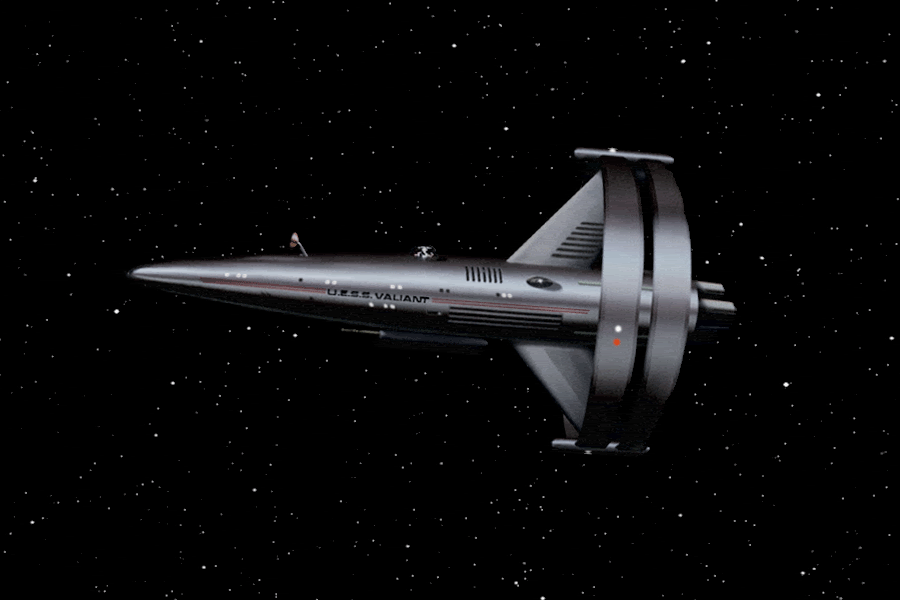Warped9,
I'm loving this new project of yours. It is so in line with my own personal preferences. I will be following with interest.
I have been very disappointed with the official prehistory the franchise has worked out for TOS. As a fan from the early days, that period before there was any other ST than TOS and the animated series, I concur that it was a magical time. The "past Trek" we have received is an anemic, paltry thing compared to the rich possibilities that were hinted at in the series and its production archives.
Fleshing out the original TOS universe using only TOS sensibilities will be fascinating.
A couple of thoughts for your consideration:
Regarding the Animated series, don't be afraid to pick and choose between what's good and what's bad. Its chief attractions are the original writers and voice talent Filmation brought in to make it. But it is a mixed bag. For every Yesteryear there are several 50-foot Spocks...
As for when FTL was achieved, I like the freer way you're thinking than merely the usual "impulse vs. warp drive" approach. My thought would be to consider that "impulse" refers to any type of reaction drive, whether or not it is combined with other techniques to achieve practical FTL results. Warp drive would then apply to reactionless, gravitic effects, specifically harnessed to FTL. This is the "warp field/contracting-expanding space itself" type of drive. If you make this distinction, it would go hand-in-hand with artificial gravity generation. The physics of the one would lead eventually (but not necessarily immediately) to the other. The effect on ship design would be that pre-warp ships would be in top-up rocket-style deck arrangements because they are dealing with thrust effects; while warp ships would feature artificial gravity deck arrangements, because they necessarily need to control inertial effects. It could also mean that there was a period where artifical gravity generation was available, but before the same physics had matured to the point of allowing true space warp FTL
A final comment: Thanks for re-posting your Shuttle Maintenance Deck images. That is one of my favorite TOS-E extrapolations I've ever seen.
MGagen
I'm loving this new project of yours. It is so in line with my own personal preferences. I will be following with interest.
I have been very disappointed with the official prehistory the franchise has worked out for TOS. As a fan from the early days, that period before there was any other ST than TOS and the animated series, I concur that it was a magical time. The "past Trek" we have received is an anemic, paltry thing compared to the rich possibilities that were hinted at in the series and its production archives.
Fleshing out the original TOS universe using only TOS sensibilities will be fascinating.
A couple of thoughts for your consideration:
Regarding the Animated series, don't be afraid to pick and choose between what's good and what's bad. Its chief attractions are the original writers and voice talent Filmation brought in to make it. But it is a mixed bag. For every Yesteryear there are several 50-foot Spocks...
As for when FTL was achieved, I like the freer way you're thinking than merely the usual "impulse vs. warp drive" approach. My thought would be to consider that "impulse" refers to any type of reaction drive, whether or not it is combined with other techniques to achieve practical FTL results. Warp drive would then apply to reactionless, gravitic effects, specifically harnessed to FTL. This is the "warp field/contracting-expanding space itself" type of drive. If you make this distinction, it would go hand-in-hand with artificial gravity generation. The physics of the one would lead eventually (but not necessarily immediately) to the other. The effect on ship design would be that pre-warp ships would be in top-up rocket-style deck arrangements because they are dealing with thrust effects; while warp ships would feature artificial gravity deck arrangements, because they necessarily need to control inertial effects. It could also mean that there was a period where artifical gravity generation was available, but before the same physics had matured to the point of allowing true space warp FTL
A final comment: Thanks for re-posting your Shuttle Maintenance Deck images. That is one of my favorite TOS-E extrapolations I've ever seen.
MGagen





 Have you decided on a scale/size of the ship, yet?
Have you decided on a scale/size of the ship, yet?